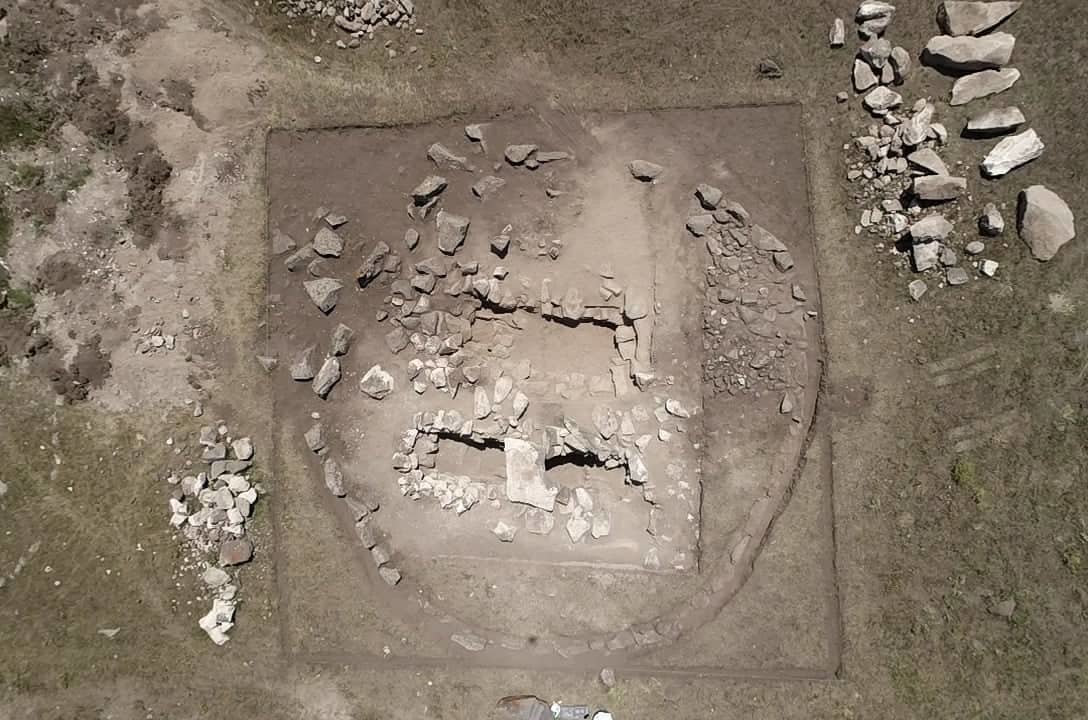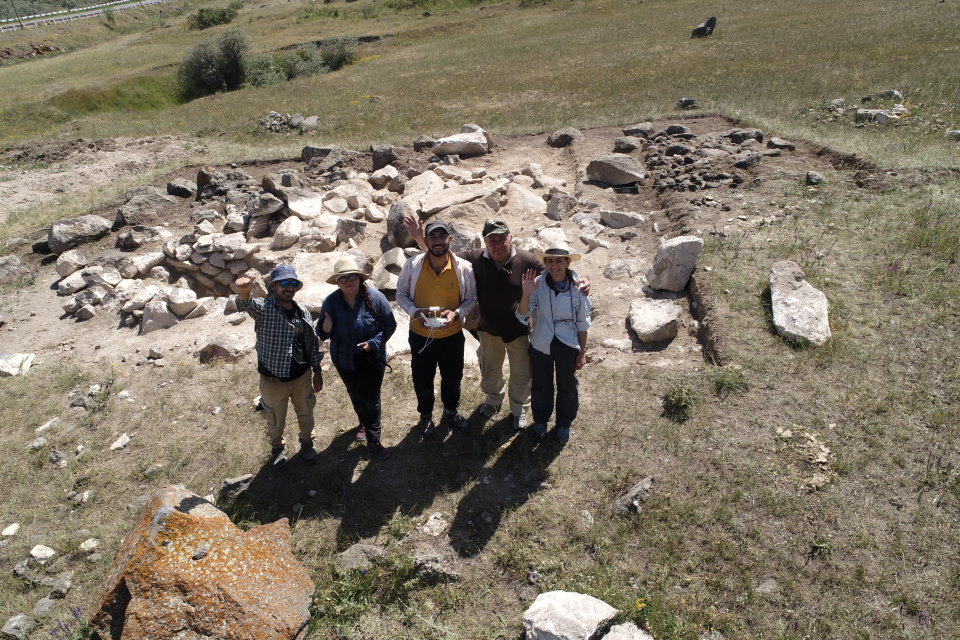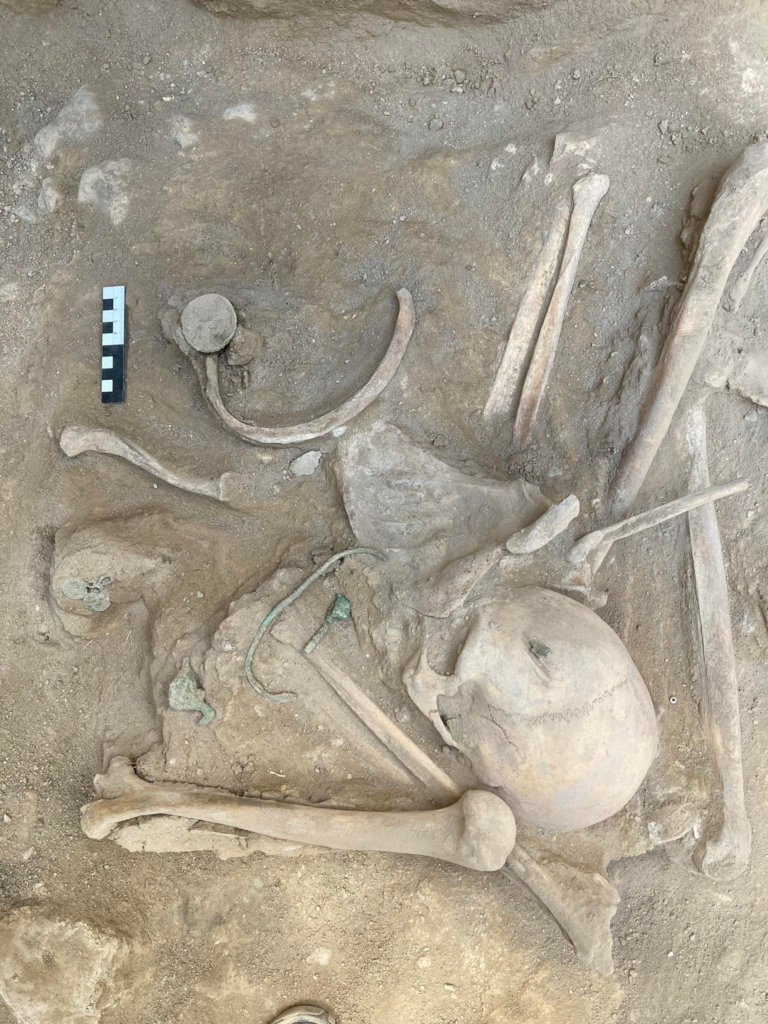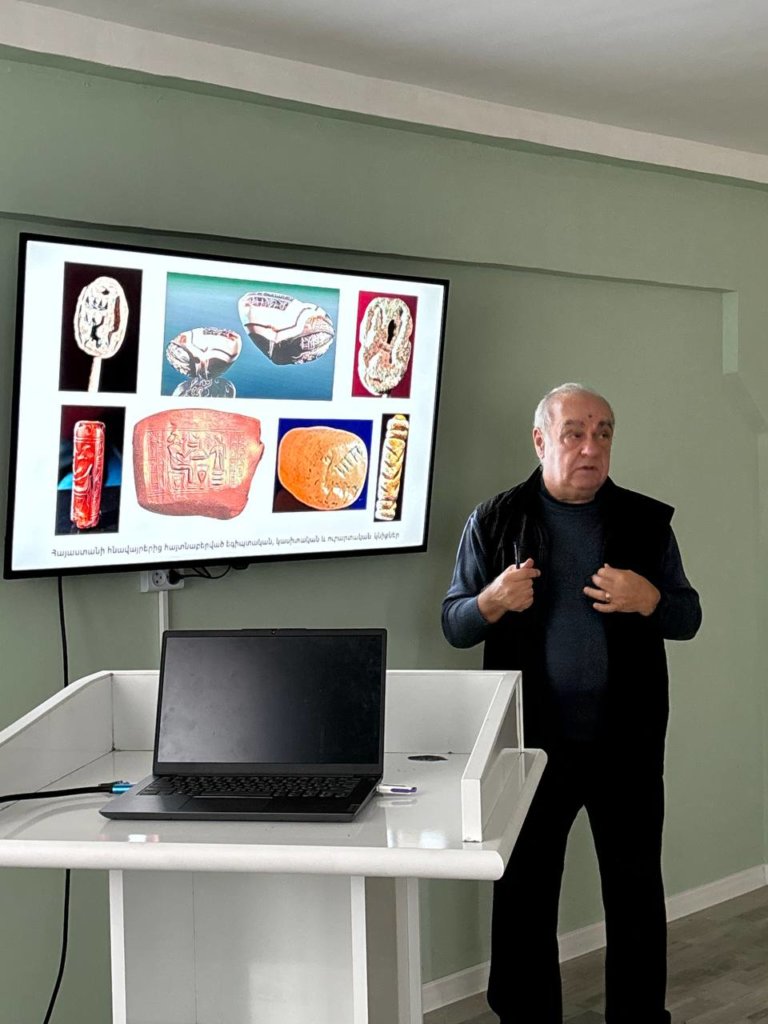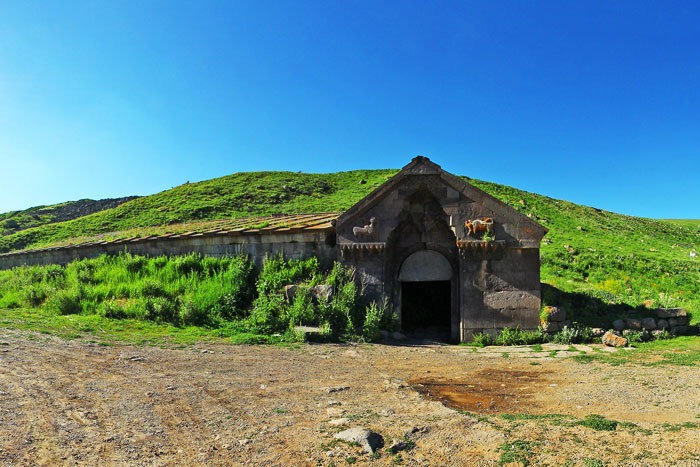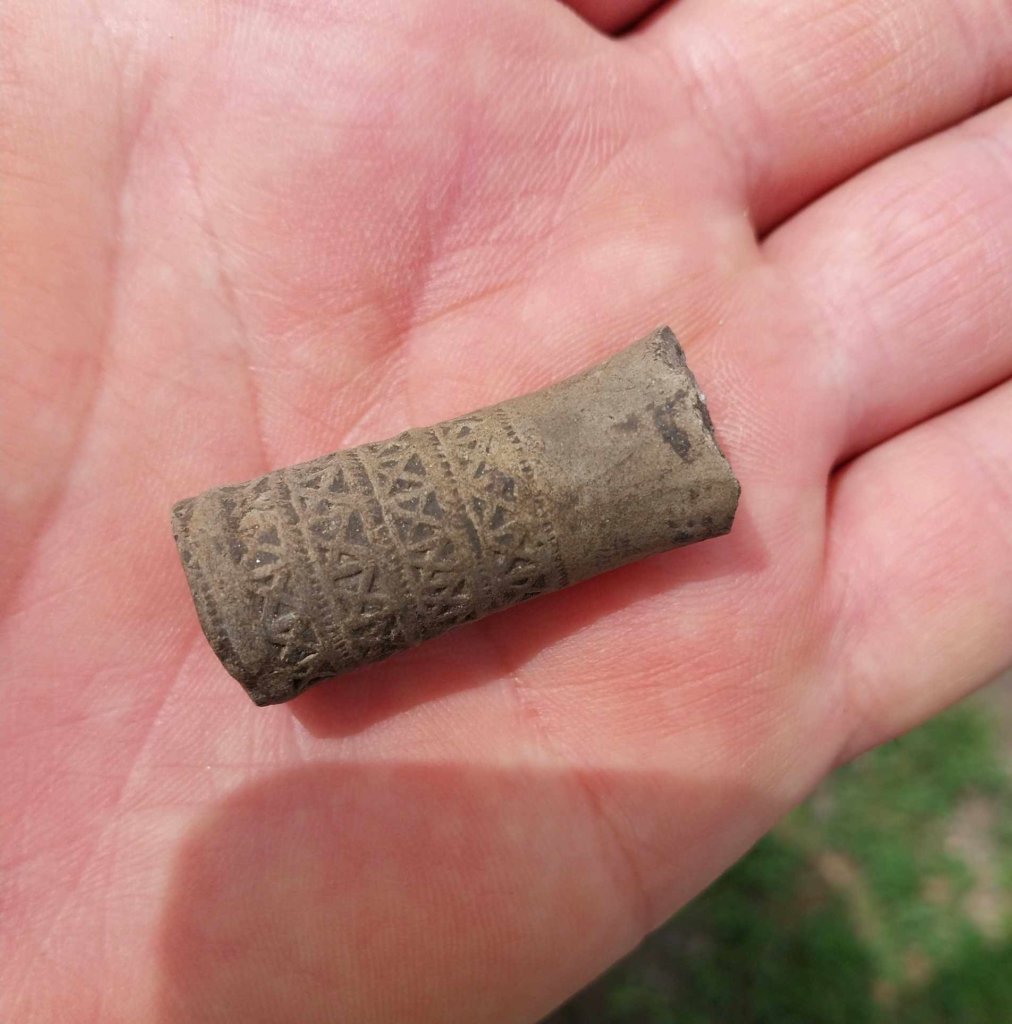The settlement and necropolis of Kanagegh, located on the western coast of Lake Sevan, crossing the highway Sevan-Vardenis, about 5,5 km north of Yeranos village and on the border of the administrative areas of Karmirgyugh and Gegharkunik communities, have been known to experts for a long time. Archeologist Gedeon Mikayelyan carried out measurements here in the 1960s, and during the construction of the highway construction, the two opened tombs were excavated by archeologist Grigor Areshyan. The necropolis occupies an area of several tens of hectares, a significant part of which was deprived of its external features as a result of reclamation works in the 1980s. Excavations at the necropolis were continued from 1999 to 2002 by the expedition of the Institute of Archaeology and Ethnography of the National Academy of Sciences (headed by Ashot Piliposyan).
According to the leader of the expedition, a Doctor of Historical Sciences, Professor Ashot Piliposyan: “The nine (9) excavated tombs are stone tombs with cromlechs, individual and group burials. The found archaeological materials are diverse and date to the 15th-9th centuries BC. The paleoanthropological and paleontological material is also well preserved. The twofold mold for molding jewelry stands out, among the excavated finds during this period, and today it is still possible to make seven (7) types of jewelry with it.”
About 20 years after the last excavations, in May 2021, the employees of the regional service of Gegharkunik province of the “Service for the protection of historical environment and cultural museum-reservations” SNCO of the Ministry of Education, Science, Culture and Sport of the Republic of Armenia recorded a fact of treasure hunting in the area of the cemetery. Relevant documents were drawn up and the case was handed over to the police. The treasure hunters had removed a part of the tomb with the help of equipment and partially moved the grave slabs. They failed to do more. In order to excavate the damaged document urgently, money was allocated from the resources of scientific programmes for the maintenance and development of the infrastructure allotted by the Science Committee of the Republic of Armenia to the “Erebuni” Historical and Archaeological Museum of Yerevan Municipality and an archaeological expedition was created from the scientific researchers of the museum, “Service for the protection of historical environment and cultural museum-reservations” SNCO and the Institute of Archeology and Ethnography of the National Academy of Sciences of the Republic of Armenia ( headed by: Archeologist, Doctor of Historical Sciences, Professor Ashot Piliposyan, members: Paleoanthropologists: Ph.D., Ruzan Mkrtchyan, Hasmik Simonyan, and archaeologist, Ph.D. Ben Vardanyan, restorer Tigran Zakyan, and archeologist Lusine Alexanyan, architect Artak Hakhverdyan/ carried out the excavations in October-November 2021 and July 2022.
Ashot Piliposyan says: “During the excavation, the stone cromlech with a diameter of about 15.0 m and two (2) burial chambers located in its center was opened. They contain group burials and, according to preliminary research results, refer to the 15th-14th centuries BC and the 3rd-2nd centuries BC. Rich archeological and paleoanthropological material was found. The well-preserved skeletons of about 25 individuals, bronze forehead adornment, bronze statuettes of birds, bracelets, rings, a string of beads, pottery fragments, seashells, etc., were excavated from the two (2) tombs. The materials are already cleaned, restored, fixed, and processed”.
The next stage will be their publication.


